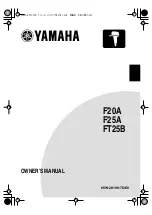©
Semiconductor Components Industries, LLC, 2011
October, 2011
−
Rev. 1
1
Publication Order Number:
EVBUM2024/D
CAT4106AGEVB
CAT4106 LED Driver
Evaluation Board
User's Manual
Introduction
This document describes the CAT4106AGEVB
evaluation board for the CAT4106 quad-channel DC/DC
boost LED driver. The major operating characteristics of the
CAT4106 can be measured with this board.
The CAT4106 DC/DC converter is capable of driving up
to 4 strings of LEDs with tight matching. This device is
designed to drive LED strings up to 36 V. The LED
brightness is set by a single resistor from the RSET pin to
GND and PWM dimming is available via the EN/PWM pin.
Additional information can be found in the CAT4106 data
sheet.
Figure 1. CAT4106AGEVB Board
Operation Procedure
The CAT4106AGEVB board contains one CAT4106 in
a typical application circuit. The board can be powered in
two different ways. With the J1 jumper in place a single high
voltage supply (6 V to 24 V) can be applied between VL and
GND. A circuit on board will generate a lower, regulated
voltage for the VIN pin (6.2 V – V
GS
of transistor M1). VIN
can also be powered separately by removing the J1 jumper
and applying a second voltage to the VIN test point. The
voltage at VIN should not exceed 6.0 V.
VFMAX and VFMIN are set by potentiometers R4 and
R6 respectively. The VFMIN potentiometer is located
closest to the VIN test point. These can be used to set the
maximum and minimum allowable forward voltages for any
given LED string. For the CAT4106AGEVB, the settings for
these potentiometers are calculated as follows:
R4
+
69.8 k
W
ǒ
V
FMAX
1.2 V
*
1
Ǔ
*
100 k
W
(eq. 1)
R6
+
60 k
W
ǒ
V
FMIN
1.2 V
*
1
Ǔ
*
100 k
W
(eq. 2)
Any open LED conditions will trigger a fault condition.
Any short LED conditions will only trigger a fault condition
during power-up. A red LED will turn on when a fault
condition takes place.
The LED current is set by potentiometer R13 which is
labeled RSET on the CAT4106AGEVB. The anode end of
each LED string should be connected to VOUT and the
cathode ends can be connected at the available header
connectors J5 and J6. Placing jumpers on J5 and J6 headers
allows to short two or more LED channels together.
EN or PWM input signals can be connected at the
EN/PWM test point. The voltage at EN/PWM should not
exceed 6.0 V. The CAT4106 can support PWM frequencies
up to 2 kHz.
http://onsemi.com
EVAL BOARD USER’S MANUAL

















